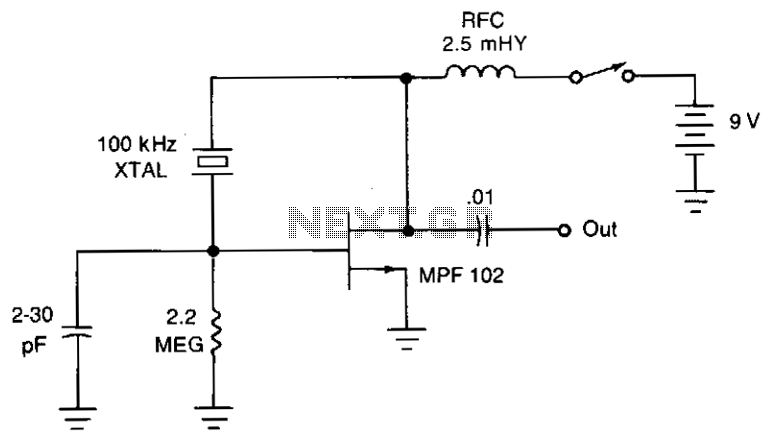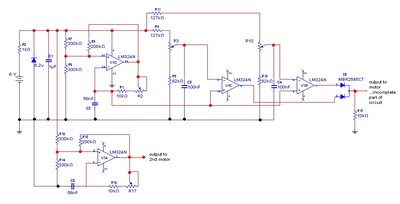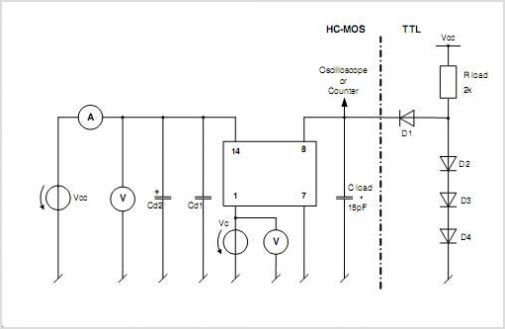
Pierce crystal oscillator

The JFET Pierce oscillator is stable and straightforward. It can serve as the clock for a microprocessor, a digital timepiece, or a calculator. With a probe connected to the output, it can function as a precise injection oscillator for troubleshooting purposes. Additionally, by attaching a short length of wire to the output, this circuit can transform into a micropower transmitter.
The JFET Pierce oscillator employs a Junction Field-Effect Transistor (JFET) in a feedback configuration to generate a stable oscillation. The circuit typically consists of a JFET, a crystal or resonator, and passive components such as resistors and capacitors that define its operating frequency. The oscillator's stability is primarily determined by the quality of the crystal and the gain provided by the JFET.
In its role as a clock for digital devices, the JFET Pierce oscillator can produce precise timing signals, essential for synchronizing operations in microprocessors and digital circuits. The frequency output can be adjusted by selecting different crystals or resonators, allowing for versatility in various applications.
When utilized as a troubleshooting tool, the output probe can inject a known frequency into other circuits, aiding in the diagnosis of frequency-related issues. This application is particularly useful in the testing and maintenance of RF circuits or any system where timing is critical.
Moreover, by connecting a small length of wire to the output, the JFET Pierce oscillator can be modified to act as a micropower transmitter. This feature allows the circuit to transmit low-power signals over short distances, making it suitable for applications such as remote controls or wireless sensor networks. The simplicity and low power consumption of the JFET Pierce oscillator make it an attractive choice for battery-operated devices.
Overall, the JFET Pierce oscillator is a versatile and efficient circuit that finds utility in various electronic applications, from timing and troubleshooting to low-power transmission.The JFET Pierce oscillator is stable and simple. It can be the clock of a microprocessor, a digital timepiece or a calculator. With a probe at the output, it can be used as a precise injection oscillator for troubleshooting. Attach a small length of wire at the output and this circuit becomes a micropower transmitter.
The JFET Pierce oscillator employs a Junction Field-Effect Transistor (JFET) in a feedback configuration to generate a stable oscillation. The circuit typically consists of a JFET, a crystal or resonator, and passive components such as resistors and capacitors that define its operating frequency. The oscillator's stability is primarily determined by the quality of the crystal and the gain provided by the JFET.
In its role as a clock for digital devices, the JFET Pierce oscillator can produce precise timing signals, essential for synchronizing operations in microprocessors and digital circuits. The frequency output can be adjusted by selecting different crystals or resonators, allowing for versatility in various applications.
When utilized as a troubleshooting tool, the output probe can inject a known frequency into other circuits, aiding in the diagnosis of frequency-related issues. This application is particularly useful in the testing and maintenance of RF circuits or any system where timing is critical.
Moreover, by connecting a small length of wire to the output, the JFET Pierce oscillator can be modified to act as a micropower transmitter. This feature allows the circuit to transmit low-power signals over short distances, making it suitable for applications such as remote controls or wireless sensor networks. The simplicity and low power consumption of the JFET Pierce oscillator make it an attractive choice for battery-operated devices.
Overall, the JFET Pierce oscillator is a versatile and efficient circuit that finds utility in various electronic applications, from timing and troubleshooting to low-power transmission.The JFET Pierce oscillator is stable and simple. It can be the clock of a microprocessor, a digital timepiece or a calculator. With a probe at the output, it can be used as a precise injection oscillator for troubleshooting. Attach a small length of wire at the output and this circuit becomes a micropower transmitter.





